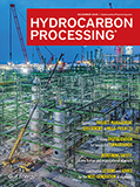Failure analysis of olefin furnace radiant tubes
A detailed failure investigation into the cracking of ethylene furnace radiant tubes included visual, fractographic, metallographic, scanning electron microscopy/x-ray spectroscopy, and hardness and chemical examinations. These analyses showed that the tube crack was initiated by thermal shock, accompanied by restrained thermal expansion due to internal coke layer formation. Details of the failure’s contributing factors, and recommendations to avoid similar failures, are shared here.
IP: 10.1.103.123
This is a preview of our premium content. Thank you for your interest—please
log in or
subscribe to read the full article.
The Authors
Al-Meshari, A. - SABIC Technology Centre, Jubail, Saudi Arabia
Abdulaziz Al-Meshari is a principal engineer at SABIC’s Asset Technology Center. He has 18 years of experience in the petrochemical industry, mostly related to failure analysis, metallurgy and materials selection. Dr. Al-Meshari holds a PhD in materials science and metallurgy from the University of Cambridge in the UK; an MSc degree in corrosion science and engineering from the University of Manchester’s Institute of Science and Technology (UMIST) in the UK, and a BSc degree.
van Zyl, G. - SABIC Technology Centre, Jubail, Saudi Arabia
Gys van Zyle is a principal engineer at SABIC’s Asset Technology Centre. He has 20 years of experience in the petrochemical industry, mostly related to mechanical design, numerical simulation and fitness for service. He holds an MS degree in mechanical engineering from the University of Stellenbosch in South Africa.
From the Archive








Comments